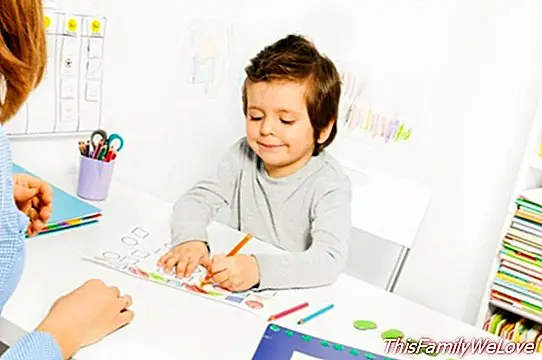The game as a therapeutic tool for children

The value of the game It has a great importance in childhood. Its attractiveness for children turns game in a therapeutic toolIt is essential to detect some pathologies that affect children's behavior.
Through the game, the therapists can work different dysfunctions in the physical, cognitive, social and affective environment of the child. But in addition, the game is also a work area for children to improve autonomy and gain self-esteem, quality of life and sense of achievement.
The game is the main activity of the child. Whether at school, at home, in the car or in the park, it is vital to give importance to the game of the little ones. In the same way it is done in a treatment. For this reason and thanks to the remarkable ability of children to express themselves in non-verbal language, therapists try to adapt almost completely to the needs that are shown when observing children's games.
Playtime and child treatment
The game time as a tool was introduced by Melanie Klein, psychoanalyst of the English school in the 50s. In this space of time, the therapist deals with the child having in the session a box with various toys (animals, families, constructions , kitchen elements, etc.), including also drawing material as something available, since there are children who barely speak or who feel self-conscious playing in front of a therapist, so that the interpretation of their drawings can be very useful.
Very valuable information can be obtained depending on whether the game is ordered or not, it may not exist, it may be inhibited. It can also be chaotic, obsessive or even manic. The sequences and toys chosen by the child will be indicative of all this, manifesting sometimes free expression of fantasy and free association when the game is healthy, and in others, a game that is indicative of alterations in emotional development and that It shows conflicts that will have to be elaborated.
The game is an expression and a vehicle for the fantasies and conflicts of children, hence how quickly you can access your emotional state through this tool.
All types of disorders are appropiate: school failure, dyslexia, enuresis, including early developmental disorders such as psychosis. During the therapeutic encounter, the child can play freely with all the available material, while the analyst will try at all times to build and maintain a strong enough bond with the child to understand and help him.
3 game features as therapy
1. It promotes emotional development. The therapeutic value of the understanding of the game and the work of elaboration of conflicts make it a unique tool in the psychological approach of children with problems. Even working with children diagnosed with autism, who do not play, the understanding and verbalization of their emotions produce amazing achievements. There is something in the analytical method that with its intimacy, privacy and attention makes it possible to produce creative experiences that promote emotional development during the meeting between child and therapist during the session.
2. It serves as a bridge between fantasy and reality. A toy can allow the child, during the session, to overcome their fears, serving as a bridge between fantasy and reality. The same game can even acquire different meanings according to the situation in which the child is and the context and associations of the session, being able to even turn an inhibitory game into a creative game with the opportune interventions.
When the child plays, he creates and recreates as an artist does with his inner world. When playing, the most internal and unconscious fantasies are expressed and, therefore, they can be understood and elaborated within during the therapeutic session.
3. It allows to elaborate the conflicts.Therapy through the game also allows to address the adaptation problems of some children. When children suffer from a disorder that alters their psychic balance, it manifests itself first of all in their game. Through the child's motivation for the game one can acquire therapeutic objectives that are pursued since, by playing freely, one can observe their sensations, emotions and their relationship with the environment.
Casilda Puerta Medina. Psychotherapist.




